Wearable Sensors and Artificial Intelligence for Physical Ergonomics: A Systematic Review of Literature
Abstract
:1. Introduction
- Physical ergonomics related to physical activity concerning human anatomical characteristics;
- Cognitive ergonomics related to mental processes;
- Organizational ergonomics related to optimization of socio-technical systems.
2. Research Strategy
Search Methodology and Study Selection
- Conference reviews, reviews, book chapters and erratum;
- Papers not available;
- Papers duplicated.
- Papers proposing human-machine interface solutions without wearable devices, and not explicitly related to occupational medicine (e.g., touchless control interface in an underwater simulation environment [29]);
- Papers proposing wearable devices for cognitive ergonomics (e.g., [30]);
- Papers proposing only a wearable device solution without AI (e.g., [31]);
- Papers proposing wearable devices for other purposes (e.g., rehabilitation [32]).
3. Main Findings and Argumentation
3.1. Wearable Device Type and Study Population
3.2. Sensor Type and Positioning
3.3. Ergonomic Criteria
3.4. Artificial Intelligence Strategy
3.5. Feature Extraction
4. Conclusions
Author Contributions
Funding
Institutional Review Board Statement
Informed Consent Statement
Data Availability Statement
Acknowledgments
Conflicts of Interest
References
- Punnett, L.; Cherniack, M.; Henning, R.; Morse, T.; Faghri, P. A Conceptual Framework for Integrating Workplace Health Promotion and Occupational Ergonomics Programs. Public Health Rep. 2009, 124, 16–25. [Google Scholar] [CrossRef] [PubMed] [Green Version]
- Dul, J.; Bruder, R.; Buckle, P.; Carayon, P.; Falzon, P.; Marras, W.S.; Wilson, J.R.; van der Doelen, B. A Strategy for Human Factors/Ergonomics: Developing the Discipline and Profession. Ergonomics 2012, 55, 377–395. [Google Scholar] [CrossRef] [PubMed] [Green Version]
- What Is Ergonomics? Available online: https://www.ergonomics-fees.eu/node/7 (accessed on 10 October 2022).
- De Jonge, J.; Bosma, H.; Peter, R.; Siegrist, J. Job Strain, Effort-Reward Imbalance and Employee Well-Being: A Large-Scale Cross-Sectional Study. Soc. Sci. Med. 2000, 50, 1317–1327. [Google Scholar] [CrossRef] [PubMed]
- Hansson, T.; Jensen, I. Chapter 6: Sickness Absence Due to Back and Neck Disorders. Scand. J. Public Health 2004, 32, 109–151. [Google Scholar] [CrossRef]
- Da Costa, B.R.; Vieira, E.R. Risk Factors for Work-Related Musculoskeletal Disorders: A Systematic Review of Recent Longitudinal Studies. Am. J. Ind. Med. 2010, 53, 285–323. [Google Scholar] [CrossRef]
- Pedersen, J.; Schultz, B.B.; Madsen, I.E.H.; Solovieva, S.; Andersen, L.L. High Physical Work Demands and Working Life Expectancy in Denmark. Occup. Environ. Med. 2020, 77, 576–582. [Google Scholar] [CrossRef]
- Stobbe, T.J. Occupational Ergonomics and Injury Prevention. Occup. Med. 1996, 11, 531–543. [Google Scholar]
- Stanton, N.A.; Hedge, A.; Brookhuis, K.; Salas, E.; Hendrick, H.W. Handbook of Human Factors and Ergonomics Methods, 1st ed.; CRC Press: Boca Raton, FL, USA, 2004. [Google Scholar]
- Inventory of Tools for Ergonomic Evaluation. Available online: https://www.torontomu.ca/content/dam/hfe/documents/ryerson_tool_inventory.pdf (accessed on 11 October 2022).
- Ometov, A.; Shubina, V.; Klus, L.; Skibińska, J.; Saafi, S.; Pascacio, P.; Flueratoru, L.; Gaibor, D.Q.; Chukhno, N.; Chukhno, O.; et al. A Survey on Wearable Technology: History, State-of-the-Art and Current Challenges. Comput. Netw. 2021, 193, 108074. [Google Scholar] [CrossRef]
- Stefana, E.; Marciano, F.; Rossi, D.; Cocca, P.; Tomasoni, G. Wearable Devices for Ergonomics: A Systematic Literature Review. Sensors 2021, 21, 777. [Google Scholar] [CrossRef]
- Khakurel, J.; Melkas, H.; Porras, J. Tapping into the Wearable Device Revolution in the Work Environment: A Systematic Review. Inf. Technol. People 2018, 31, 791–818. [Google Scholar] [CrossRef] [Green Version]
- Svertoka, E.; Saafi, S.; Rusu-Casandra, A.; Burget, R.; Marghescu, I.; Hosek, J.; Ometov, A. Wearables for Industrial Work Safety: A Survey. Sensors 2021, 21, 3844. [Google Scholar] [CrossRef] [PubMed]
- Chidambaram, S.; Maheswaran, Y.; Patel, K.; Sounderajah, V.; Hashimoto, D.A.; Seastedt, K.P.; McGregor, A.H.; Markar, S.R.; Darzi, A. Using Artificial Intelligence-Enhanced Sensing and Wearable Technology in Sports Medicine and Performance Optimisation. Sensors 2022, 22, 6920. [Google Scholar] [CrossRef] [PubMed]
- Nahavandi, D.; Alizadehsani, R.; Khosravi, A.; Acharya, U.R. Application of Artificial Intelligence in Wearable Devices: Opportunities and Challenges. Comput. Methods Programs Biomed. 2022, 213, 106541. [Google Scholar] [CrossRef]
- Chan, V.C.H.; Ross, G.B.; Clouthier, A.L.; Fischer, S.L.; Graham, R.B. The Role of Machine Learning in the Primary Prevention of Work-Related Musculoskeletal Disorders: A Scoping Review. Appl. Ergon. 2022, 98, 103574. [Google Scholar] [CrossRef] [PubMed]
- Van Eetvelde, H.; Mendonça, L.D.; Ley, C.; Seil, R.; Tischer, T. Machine Learning Methods in Sport Injury Prediction and Prevention: A Systematic Review. J. Exp. Ortop. 2021, 8, 1–15. [Google Scholar] [CrossRef]
- Andersen, L.L.; Vinstrup, J.; Sundstrup, E.; Skovlund, S.V.; Villadsen, E.; Thorsen, S.V. Combined Ergonomic Exposures and Development of Musculoskeletal Pain in the General Working Population: A Prospective Cohort Study. Scand. J. Work Environ. Health 2021, 47, 287–295. [Google Scholar] [CrossRef]
- Report—Expert Forecast on Emerging Physical Risks Related to Occupational Safety and Health. Available online: https://osha.europa.eu/sites/default/files/Report_-_Expert_forecast_on_emerging_physical_risks_related_to_occupational_safety_and_health.pdf (accessed on 11 October 2022).
- Pishgar, M.; Issa, S.F.; Sietsema, M.; Pratap, P.; Darabi, H. REDECA: A Novel Framework to Review Artificial Intelligence and Its Applications in Occupational Safety and Health. Int. J. Environ. Res. Public Health 2021, 18, 6705. [Google Scholar] [CrossRef]
- Karwowski, W. Ergonomics and Human Factors: The Paradigms for Science, Engineering, Design, Technology and Management of Human-Compatible Systems. Ergonomics 2005, 48, 436–463. [Google Scholar] [CrossRef]
- López-Nava, I.H.; Muñoz-Meléndez, A. Wearable Inertial Sensors for Human Motion Analysis: A Review. IEEE Sens. J. 2016, 16, 7821–7834. [Google Scholar] [CrossRef]
- Ranavolo, A.; Draicchio, F.; Varrecchia, T.; Silvetti, A.; Iavicoli, S. Wearable Monitoring Devices for Biomechanical Risk Assessment at Work: Current Status and Future Challenges—A Systematic Review. Int. J. Environ. Res. Public Health 2018, 15, 2001. [Google Scholar] [CrossRef] [Green Version]
- Hafez, K. Input Variables for Manual Material Handling Assessment Methods Obtained Using Body Worn Sensors. J. Ergon. 2022, 12, 12. [Google Scholar]
- Lee, S.; Liu, L.; Radwin, R.; Li, J. Machine Learning in Manufacturing Ergonomics: Recent Advances, Challenges, and Opportunities. IEEE Robot. Autom. Lett. 2021, 6, 5745–5752. [Google Scholar] [CrossRef]
- Higgins, J.P.T.; Thomas, J.; Chandler, J.; Cumpston, M.; Li, T.; Page, M.J.; Welch, V.A. Cochrane Handbook for Systematic Reviews of Interventions, 2nd ed.; John Wiley & Sons: Hoboken, FL, USA, 2019. [Google Scholar]
- Liberati, A.; Altman, D.G.; Tetzlaff, J.; Mulrow, C.; Gøtzsche, P.C.; Ioannidis, J.P.A.; Clarke, M.; Devereaux, P.J.; Kleijnen, J.; Moher, D. The PRISMA Statement for Reporting Systematic Reviews and Meta-Analyses of Studies That Evaluate Health Care Interventions: Explanation and Elaboration. J. Clin. Epidemiol. 2009, 62, e1–e34. [Google Scholar] [CrossRef] [PubMed] [Green Version]
- Kapicioglu, K.; Getmez, E.; Akbulut, B.E.; Akgul, A.; Ucar, B.; Kanlikilic, B.; Koc, M.; Gur, B. A Touchless Control Interface for Low-Cost ROVs. In Proceedings of the OCEANS 2021, San Diego, CA, USA, 21–23 September 2021; IEEE: Piscataway, NJ, USA, 2021. [Google Scholar]
- Izumi, K.; Minato, K.; Shiga, K.; Sugio, T.; Hanashiro, S.; Cortright, K.; Kudo, S.; Fujita, T.; Sado, M.; Maeno, T.; et al. Unobtrusive Sensing Technology for Quantifying Stress and Well-Being Using Pulse, Speech, Body Motion, and Electrodermal Data in a Workplace Setting: Study Concept and Design. Front. Psychiatry 2021, 12, 611243. [Google Scholar] [CrossRef]
- Bassani, G.; Filippeschi, A.; Avizzano, C.A. A Dataset of Human Motion and Muscular Activities in Manual Material Handling Tasks for Biomechanical and Ergonomic Analyses. IEEE Sens. J. 2021, 21, 24731–24739. [Google Scholar] [CrossRef]
- Iosa, M.; Capodaglio, E.; Pelà, S.; Persechino, B.; Morone, G.; Antonucci, G.; Paolucci, S.; Panigazzi, M. Artificial Neural Network Analyzing Wearable Device Gait Data for Identifying Patients with Stroke Unable to Return to Work. Front. Neurol. 2021, 12, 561. [Google Scholar] [CrossRef]
- Mudiyanselage, S.E.; Nguyen, P.H.D.; Rajabi, M.S.; Akhavian, R. Automated Workers’ Ergonomic Risk Assessment in Manual Material Handling Using SEMG Wearable Sensors and Machine Learning. Electronics 2021, 10, 2558. [Google Scholar] [CrossRef]
- Donisi, L.; Cesarelli, G.; Coccia, A.; Panigazzi, M.; Capodaglio, E.M.; D’Addio, G. Work-Related Risk Assessment According to the Revised NIOSH Lifting Equation: A Preliminary Study Using a Wearable Inertial Sensor and Machine Learning. Sensors 2021, 21, 2593. [Google Scholar] [CrossRef]
- Aiello, G.; Certa, A.; Abusohyon, I.; Longo, F.; Padovano, A. Machine Learning Approach towards Real Time Assessment of Hand-Arm Vibration Risk. In Proceedings of the 17th IFAC Symposium on Information Control Problems in Manufacturing INCOM 2021, Budapest, Hungary, 7–9 June 2021; International Federation of Automatic Control (IFAC): Laxenburg, Austria, 2021; pp. 1187–1192. [Google Scholar]
- Zhao, J.; Obonyo, E. Applying Incremental Deep Neural Networks-Based Posture Recognition Model for Ergonomics Risk Assessment in Construction. Adv. Eng. Inform. 2021, 50, 101374. [Google Scholar] [CrossRef]
- Matijevich, E.S.; Volgyesi, P.; Zelik, K.E. A Promising Wearable Solution for the Practical and Accurate Monitoring of Low Back Loading in Manual Material Handling. Sensors 2021, 21, 340. [Google Scholar] [CrossRef]
- Campero-Jurado, I.; Márquez-Sánchez, S.; Quintanar-Gómez, J.; Rodríguez, S.; Corchado, J.M. Smart Helmet 5.0 for Industrial Internet of Things Using Artificial Intelligence. Sensors 2020, 20, 6241. [Google Scholar] [CrossRef] [PubMed]
- Akanmu, A.A.; Olayiwola, J.; Ogunseiju, O.; McFeeters, D. Cyber-Physical Postural Training System for Construction Workers. Autom. Constr. 2020, 117, 103272. [Google Scholar] [CrossRef]
- Umer, W.; Li, H.; Yantao, Y.; Antwi-Afari, M.F.; Anwer, S.; Luo, X. Physical Exertion Modeling for Construction Tasks Using Combined Cardiorespiratory and Thermoregulatory Measures. Autom. Constr. 2020, 112, 103079. [Google Scholar] [CrossRef]
- Conforti, I.; Mileti, I.; del Prete, Z.; Palermo, E. Measuring Biomechanical Risk in Lifting Load Tasks Through Wearable System and Machine-Learning Approach. Sensors 2020, 20, 1557. [Google Scholar] [CrossRef] [PubMed] [Green Version]
- Zhao, J.; Obonyo, E. Convolutional Long Short-Term Memory Model for Recognizing Construction Workers’ Postures from Wearable Inertial Measurement Units. Adv. Eng. Inform. 2020, 46, 101177. [Google Scholar] [CrossRef]
- Antwi-Afari, M.; Li, H.; Umer, W.; Yu, Y.; Xing, X. Construction Activity Recognition and Ergonomic Risk Assessment Using a Wearable Insole Pressure System. J. Constr. Eng. Manag. 2020, 146, 04020077. [Google Scholar] [CrossRef]
- Asadi, H.; Zhou, G.; Lee, J.J.; Aggarwal, V.; Yu, D. A Computer Vision Approach for Classifying Isometric Grip Force Exertion Levels. Ergonomics 2020, 63, 1010–1026. [Google Scholar] [CrossRef]
- Estrada, J.E.; Vea, L.A. Real-Time Human Sitting Position Recognition Using Wireless Sensors. In Proceedings of the 2020 2nd International Conference on Image, Video and Signal Processing, Singapore, 20–22 March 2020; Association for Computing Machinery: New York, NY, USA, 2020; pp. 133–137. [Google Scholar]
- Fridolfsson, J.; Arvidsson, D.; Doerks, F.; Kreidler, T.J.; Grau, S. Workplace Activity Classification from Shoe-Based Movement Sensors. BMC Biomed. Eng. 2020, 2, 8. [Google Scholar] [CrossRef]
- Manjarres, J.; Narvaez, P.; Gasser, K.; Percybrooks, W.; Pardo, M. Physical Workload Tracking Using Human Activity Recognition with Wearable Devices. Sensors 2020, 20, 39. [Google Scholar] [CrossRef] [Green Version]
- Zhang, L.; Diraneyya, M.; Ryu, J.; Haas, C.; Abdel-Rahman, E. Automated Monitoring of Physical Fatigue Using Jerk. In Proceedings of the 36th International Symposium on Automation and Robotics in Construction (ISARC 2019), Banff, AB, Canada, 21–24 May 2019; International Association for Automation and Robotics in Construction: Oulu, Finland, 2019. [Google Scholar]
- Low, J.X.; Wei, Y.; Chow, J.; Ali, I.F.B. ActSen—AI-Enabled Real-Time IoT-Based Ergonomic Risk Assessment System. In Proceedings of the 2019 IEEE International Congress on Internet of Things (ICIOT), Milan, Italy, 8–13 July 2019; IEEE: Piscataway, NJ, USA, 2019; pp. 76–78. [Google Scholar]
- Lim, S.; D’Souza, C. Gender and Parity in Statistical Prediction of Anterior Carry Hand-Loads from Inertial Sensor Data. In Proceedings of the Proceedings of the Human Factors and Ergonomics Society Annual Meeting, Seattle, WA, USA, 28 October–1 November 2019; SAGE Publications Inc: Los Angeles, CA, USA, 2019; pp. 1142–1146. [Google Scholar]
- Xie, X.; Chang, Z. Intelligent Wearable Occupational Health Safety Assurance System of Power Operation. J. Med. Syst. 2018, 43, 1–7. [Google Scholar] [CrossRef]
- Martire, T.; Nazemzadeh, P.; Sanna, A.; Trojaniello, D. Digital Screen Detection Enabled by Wearable Sensors: Application in ADL Settings. In Proceedings of the 2018 International Conference on Intelligent Systems (IS), Madeira, Portugal, 25–27 September 2018; IEEE: Piscataway, NJ, USA, 2018; pp. 584–588. [Google Scholar]
- Antwi-Afari, M.F.; Li, H.; Yu, Y.; Kong, L. Wearable Insole Pressure System for Automated Detection and Classification of Awkward Working Postures in Construction Workers. Autom. Constr. 2018, 96, 433–441. [Google Scholar] [CrossRef]
- Nath, N.D.; Chaspari, T.; Behzadan, A.H. Automated Ergonomic Risk Monitoring Using Body-Mounted Sensors and Machine Learning. Adv. Eng. Inform. 2018, 38, 514–526. [Google Scholar] [CrossRef]
- Yu, Y.; Li, H.; Yang, X.; Umer, W. Estimating Construction Workers’ Physical Workload by Fusing Computer Vision and Smart Insole Technologies. In Proceedings of the 35th International Symposium on Automation and Robotics in Construction (ISARC 2018), Berlin, Germany, 20–25 July 2018; International Association on Automation and Robotics in Construction: Oulu, Finland, 2018; pp. 1212–1219. [Google Scholar]
- Raso, R.; Emrich, A.; Burghardt, T.; Schlenker, M.; Gudehus, T.; Sträter, O.; Fettke, P.; Loos, P. Activity Monitoring Using Wearable Sensors in Manual Production Processes—An Application of CPS for Automated Ergonomic Assessments. In Proceedings of the Multikonferenz Wirtschaftsinformatik 2018 (MKWI 2018), Lüneburg, Germany, 6–9 March 2018; Leuphana Universität Lüneburg: Lüneburg, Germany, 2018. [Google Scholar]
- Olsen, G.F.; Brilliant, S.S.; Primeaux, D.; Najarian, K. Signal Processing and Machine Learning for Real-Time Classification of Ergonomic Posture with Unobtrusive on-Body Sensors; Application in Dental Practice. In Proceedings of the 2009 ICME International Conference on Complex Medical Engineering, Tempre, AZ, USA, 9–11 April 2009; IEEE: Piscataway, NJ, USA, 2009. [Google Scholar]
- Motti, V.G.; Caine, K. Human Factors Considerations in the Design of Wearable Devices. In Proceedings of the Human Factors and Ergonomics Society Annual Meeting, Chicago, IL, USA, 27–31 October 2014; Sage Publications: Los Angeles, CA, USA, 2014; pp. 1820–1824. [Google Scholar]
- Motti, V.G.; Caine, K. An Overview of Wearable Applications for Healthcare: Requirements and Challenges. In Proceedings of the 2015 Association for Computing Machinery International Joint Conference on Pervasive and Ubiquitous Computing and 2015 Association for Computing Machinery International Symposium on Wearable Computers (UbiComp/ISWC’15 Adjunct), Osaka, Japan, 7–11 September 2015; Association for Computing Machinery: New York, NY, USA, 2015; pp. 635–641. [Google Scholar]
- D’Addio, G.; Donisi, L.; Mercogliano, L.; Cesarelli, G.; Bifulco, P.; Cesarelli, M. Potential Biomechanical Overload on Skeletal Muscle Structures in Students During Walk with Backpack. In Proceedings of the XV Mediterranean Conference on Medical and Biological Engineering and Computing—MEDICON 2019; Henriques, J., Neves, N., de Carvalho, P., Eds.; Springer: Cham, Switzerland, 2019; pp. 262–266. [Google Scholar]
- Donisi, L.; Coccia, A.; Amitrano, F.; Mercogliano, L.; Cesarelli, G.; D’Addio, G. Backpack Influence on Kinematic Parameters Related to Timed Up and Go (TUG) Test in School Children. In Proceedings of the 2020 IEEE International Symposium on Medical Measurements and Applications (MeMeA), Bari, Italy, 1 June–1 July 2020; IEEE: Piscataway, NJ, USA, 2020. [Google Scholar]
- Pagano, G.; D’Addio, G.; de Campi, M.; Donisi, L.; Biancardi, A.; Cesarelli, M. Rehabilitation Outcome in Patients Undergone Hip or Knee Replacement Surgery Using Inertial Technology for Gait Analysis. In Proceedings of the 2020 IEEE International Symposium on Medical Measurements and Applications (MeMeA), Bari, Italy, 1 June–1 July 2020; IEEE: Piscataway, NJ, USA, 2020. [Google Scholar]
- D’Addio, G.; Dionisi, L.; Pagano, G.; Mercogliano, L.; Cesarelli, M.; Cesarelli, G. Effects of the school backpack on walking kinematics: A mechanical overload potentially causing musculoskeletal disorders in developmental age? G. Ital. Med. Lav. Ergon. 2020, 42, 201–207. [Google Scholar] [PubMed]
- Donisi, L.; Amitrano, F.; Coccia, A.; Mercogliano, L.; Cesarelli, G.; D’Addio, G. Influence of the Backpack on School Children’s Gait: A Statistical and Machine Learning Approach. In Proceedings of the 8th European Medical and Biological Engineering Conference, Portorož, Slovenia, 29 November–3 December 2020; Jarm, T., Cvetkoska, A., Mahnič-Kalamiza, S., Miklavcic, D., Eds.; Springer: Cham, Switzerland, 2021; pp. 682–688. [Google Scholar]
- Donisi, L.; Cesarelli, G.; Balbi, P.; Provitera, V.; Lanzillo, B.; Coccia, A.; D’Addio, G. Positive Impact of Short-Term Gait Rehabilitation in Parkinson Patients: A Combined Approach Based on Statistics and Machine Learning. Math. Biosci. Eng. 2021, 18, 6995–7009. [Google Scholar] [CrossRef] [PubMed]
- Donisi, L.; Pagano, G.; Cesarelli, G.; Coccia, A.; Amitrano, F.; D’Addio, G. Benchmarking between Two Wearable Inertial Systems for Gait Analysis Based on a Different Sensor Placement Using Several Statistical Approaches. Measurement 2021, 173, 108642. [Google Scholar] [CrossRef]
- D’Addio, G.; Donisi, L.; Pagano, G.; Improta, G.; Biancardi, A.; Cesarelli, M. Agreement between Opal and G-Walk Wearable Inertial Systems in Gait Analysis on Normal and Pathological Subjects. In Proceedings of the Annual International Conference of the IEEE Engineering in Medicine and Biology Society (EMBC), Berlin, Germany, 23–27 July 2019; IEEE: Piscataway, NJ, USA, 2019. [Google Scholar]
- Iosa, M.; Picerno, P.; Paolucci, S.; Morone, G. Wearable Inertial Sensors for Human Movement Analysis. Expert Rev. Med. Devices 2016, 13, 641–659. [Google Scholar] [CrossRef]
- O’Reilly, M.; Caulfield, B.; Ward, T.; Johnston, W.; Doherty, C. Wearable Inertial Sensor Systems for Lower Limb Exercise Detection and Evaluation: A Systematic Review. Sports Med. 2018, 48, 1221–1246. [Google Scholar] [CrossRef] [Green Version]
- Rajendran, M.; Sajeev, A.; Shanmugavel, R.; Rajpradeesh, T. Ergonomic Evaluation of Workers during Manual Material Handling. In Proceedings of the 3rd International Conference on Materials, Manufacturing and Modelling, Vellore, India, 19–21 March 2021; Vellore Institute of Technology: Vellore, India, 2021; pp. 7770–7776. [Google Scholar]
- Lu, M.-L.; Waters, T.R.; Krieg, E.; Werren, D. Efficacy of the Revised NIOSH Lifting Equation to Predict Risk of Low-Back Pain Associated With Manual Lifting: A One-Year Prospective Study. Hum. Factors 2014, 56, 73–85. [Google Scholar] [CrossRef]
- Donisi, L.; Capodaglio, E.; Pagano, G.; Amitrano, F.; Cesarelli, M.; Panigazzi, M.; D’Addio, G. Feasibility of Tree-Based Machine Learning Algorithms Fed with Surface Electromyographic Features to Discriminate Risk Classes According to NIOSH. In Proceedings of the 2022 IEEE International Symposium on Medical Measurements and Applications (MeMeA), Taormina, Italy, 22–24 June 2022; IEEE: Piscataway, NJ, USA, 2022. [Google Scholar]
- Ramadhani, M.; Rukman, R.; Prayogo, D.; Ayu, D. Assessment Analysis of Ergonomics Work Posture on Wheel Installation with Ovako Work Posture Analysis System (OWAS) Method and Rapid Entire Body Assesment (REBA) Method Preventing Musculoskeleal Disorders AT Perum PPD Jakarta. IOSR J. Humanit Soc. Sci. 2018, 23, 1–11. [Google Scholar]
- Delp, L.; Mojtahedi, Z.; Sheikh, H.; Lemus, J. A Legacy of Struggle: The OSHA Ergonomics Standard and Beyond, Part I. New Solut. 2014, 24, 365–389. [Google Scholar] [CrossRef]
- Saini, R.; Ghosh, S.K. Ensemble Classifiers in Remote Sensing: A Review. In Proceedings of the 2017 International Conference on Computing, Communication and Automation (ICCCA), Greater Noida, India, 5–6 May 2017; IEEE: Piscataway, NJ, USA, 2017; pp. 1148–1152. [Google Scholar]
- Mahesh, B. Machine Learning Algorithms—A Review. Int. J. Sci. Res. 2020, 9, 381–386. [Google Scholar] [CrossRef]
- Sydenham, P.H.; Thorn, R. Handbook of Measuring System Design, 1st ed.; Wiley: Chichester, UK, 2005. [Google Scholar]
- Weinberger, K.Q.; Saul, L.K. Distance Metric Learning for Large Margin Nearest Neighbor Classification. J. Mach. Learn. Res. 2009, 10, 207–244. [Google Scholar]
- Murthy, S.K. Automatic Construction of Decision Trees from Data: A Multi-Disciplinary Survey. Data Min. Knowl. Discov. 1998, 2, 345–389. [Google Scholar] [CrossRef]
- Kumar, A.; Naughton, J.; Patel, J.M. Learning Generalized Linear Models Over Normalized Data. In Proceedings of the 2015 ACM SIGMOD International Conference on Management of Data, Melbourne, VI, Australia, 31 May–4 June 2015; Association for Computing Machinery: New York, NY, USA, 2015; pp. 1969–1984. [Google Scholar]
- Al-Aidaroos, K.M.; Bakar, A.A.; Othman, Z. Naïve Bayes Variants in Classification Learning. In Proceedings of the 2010 International Conference on Information Retrieval & Knowledge Management (CAMP), Shah Alam, Malaysia, 17–18 March 2010; IEEE: Piscataway, NJ, USA, 2010; pp. 276–281. [Google Scholar]
- Zhang, H.; Yan, X.; Li, H. Ergonomic Posture Recognition Using 3D View-Invariant Features from Single Ordinary Camera. Autom. Constr. 2018, 94, 1–10. [Google Scholar] [CrossRef]
- Tsao, L.; Li, L.; Ma, L. Human Work and Status Evaluation Based on Wearable Sensors in Human Factors and Ergonomics: A Review. IEEE Trans. Hum. Mach. Syst. 2019, 49, 72–84. [Google Scholar] [CrossRef]
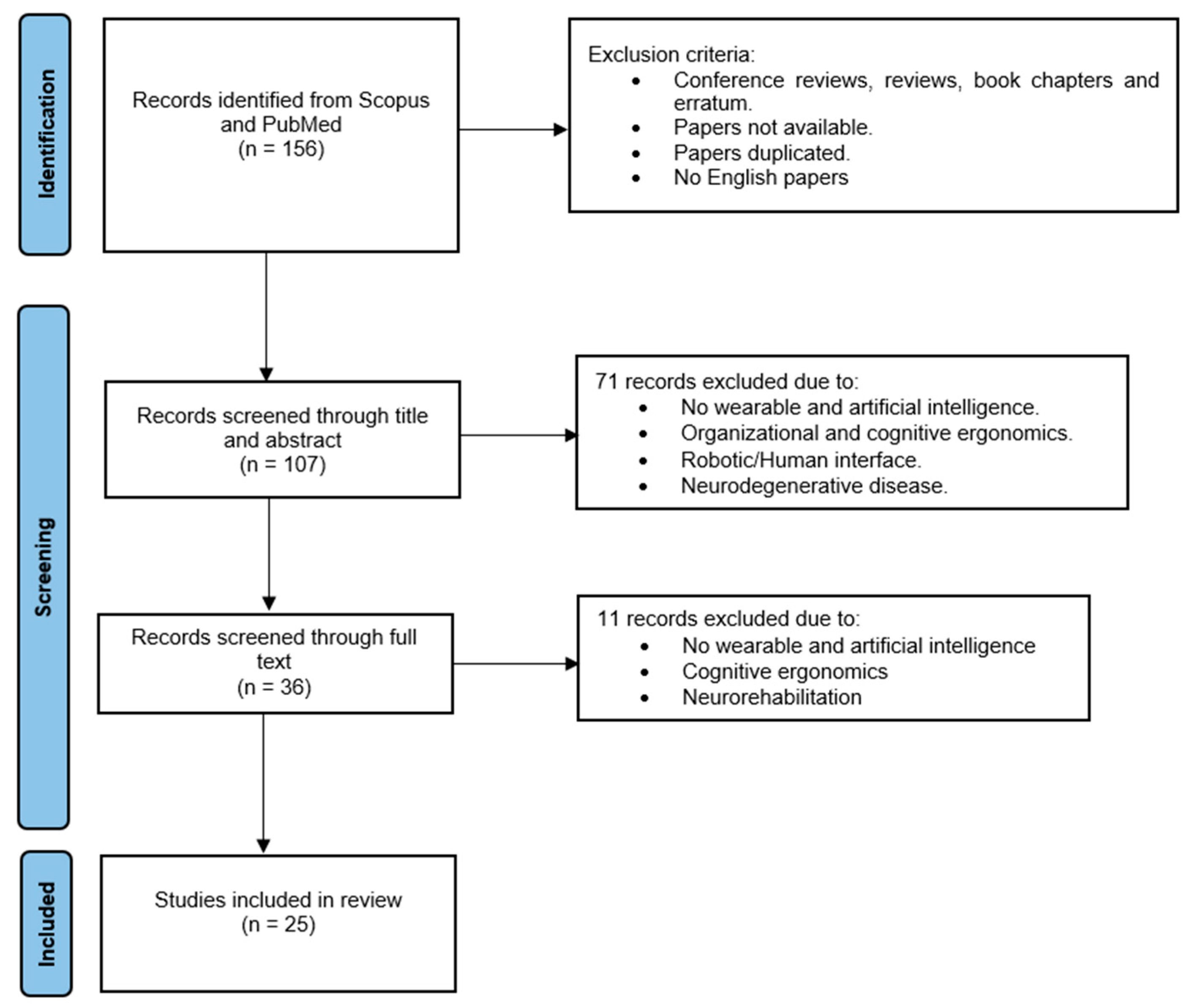
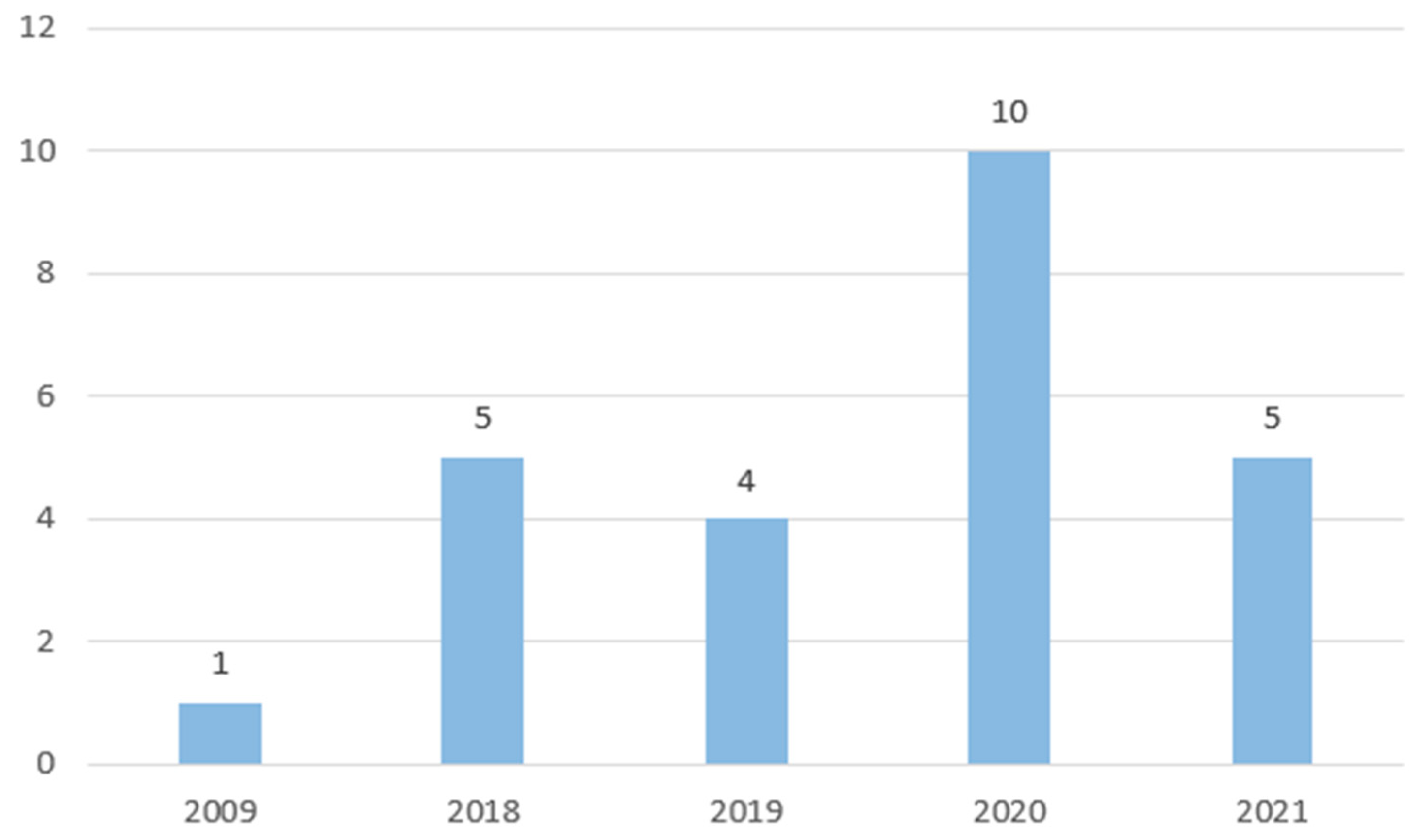

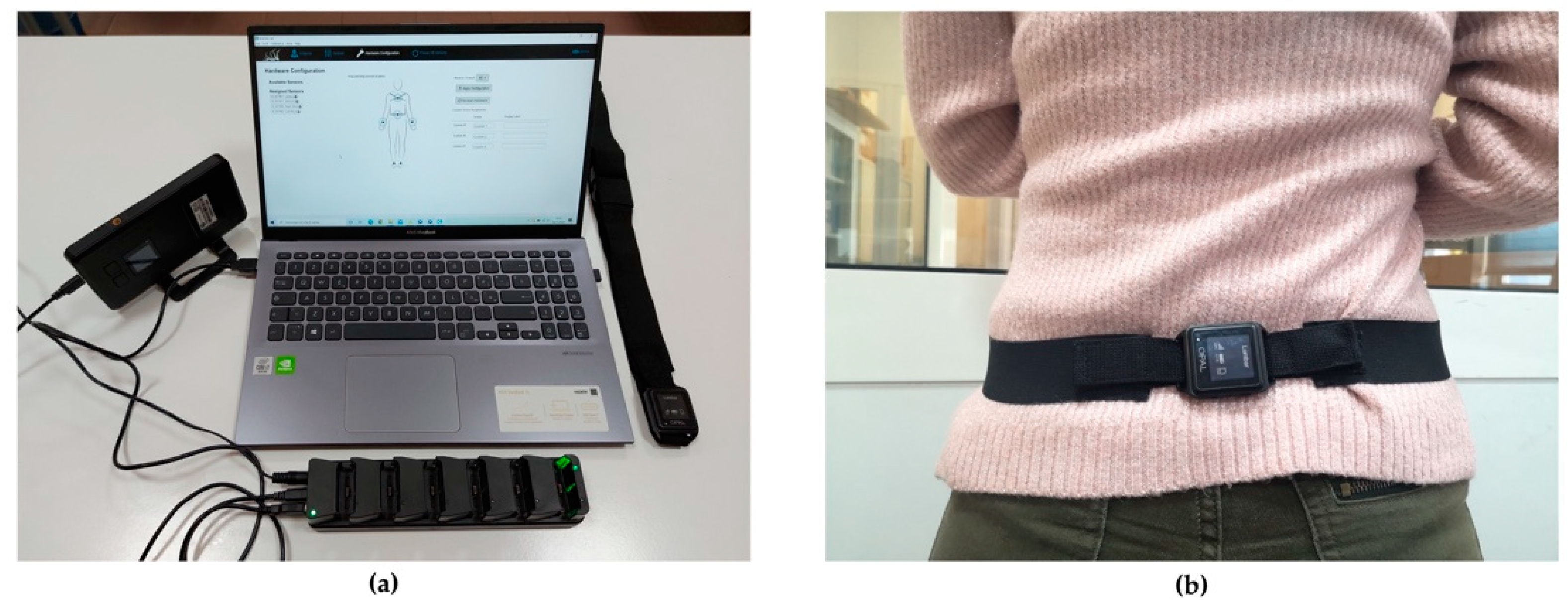
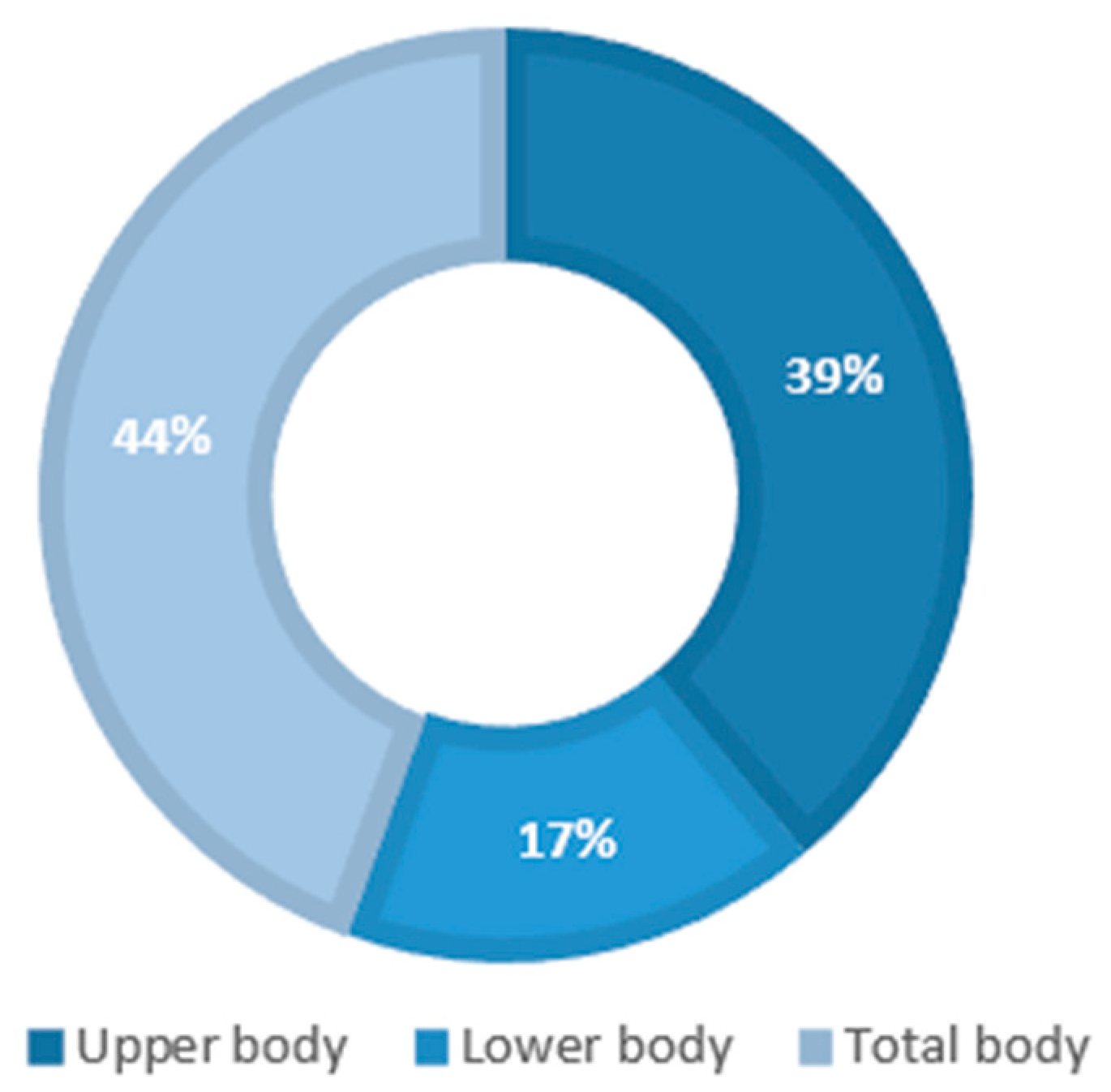
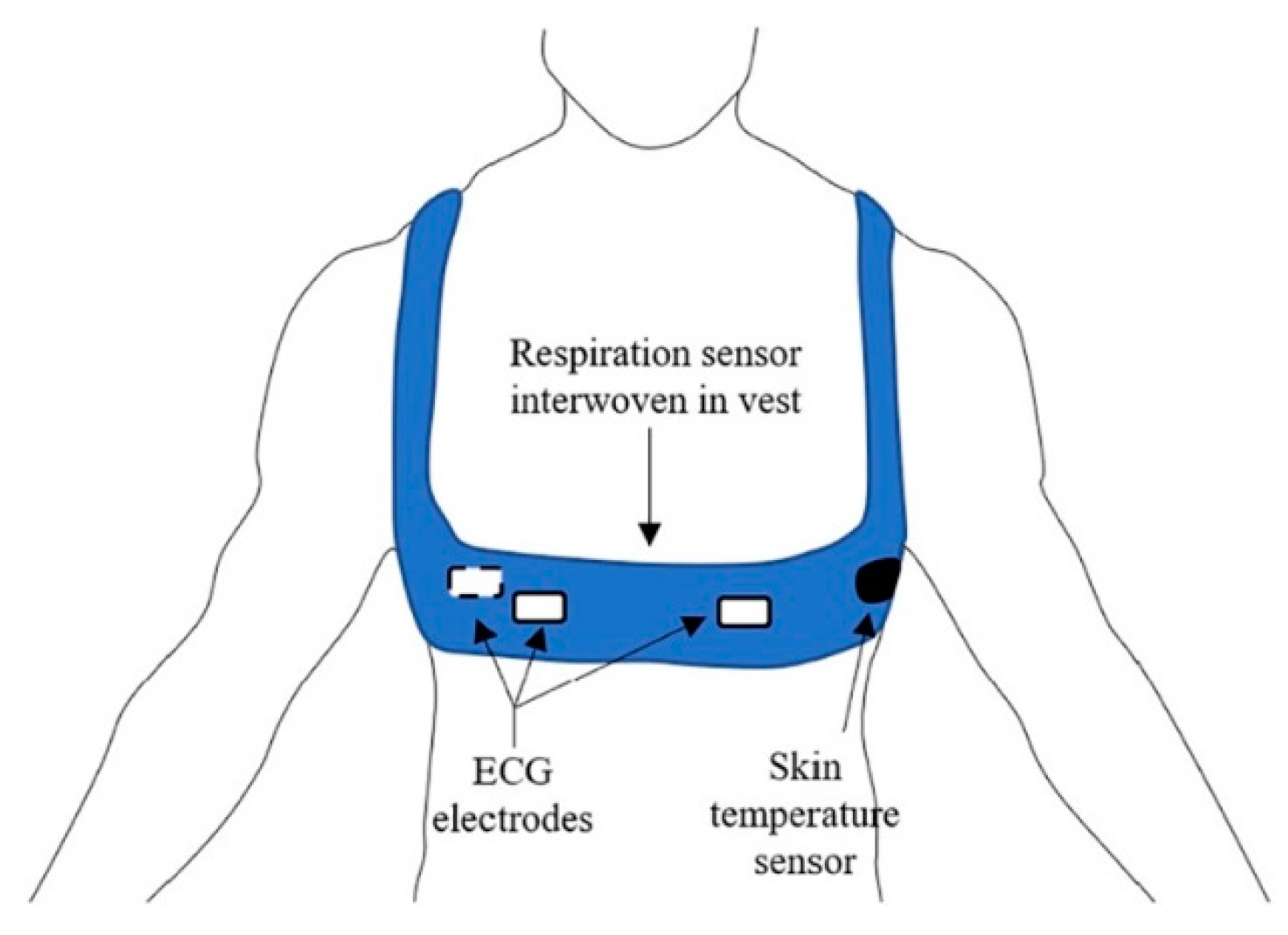
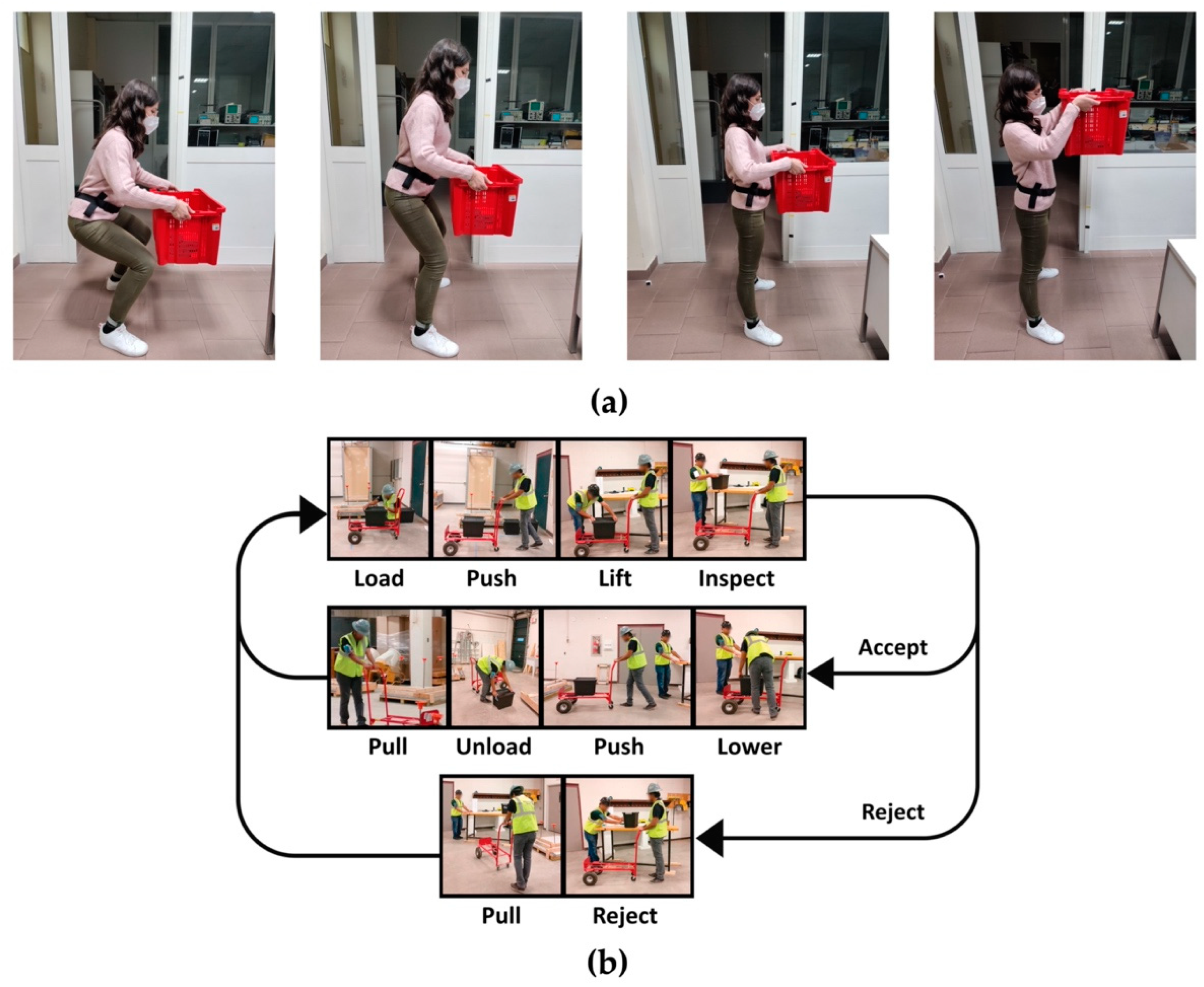
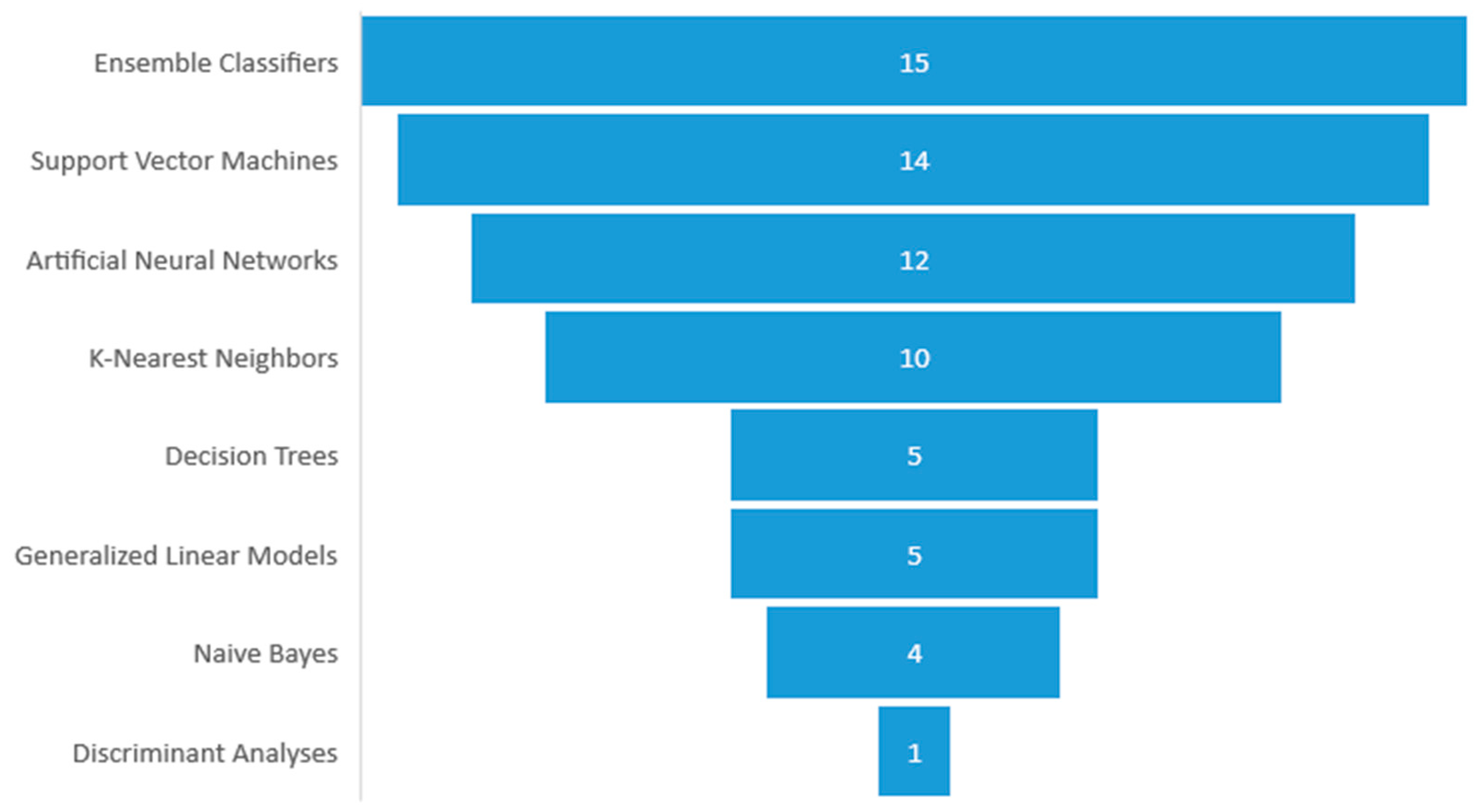
| Study | Scope | Population | Sensor (Positioning) | Signal Acquired | Task | Ergonomic Criteria | AI Strategy (Algorithms) | Extracted Features | Results |
|---|---|---|---|---|---|---|---|---|---|
| Mudiyanselage et al. (2021) [33] | Detecting the level of risk of harmful lifting activities characterized by the NIOSH Lifting Index using ML models trained with sEMG sensor data | 1 volunteer healthy subject | 2 wireless sEMG muscle sensors (Thoracic and Multifidus muscles) | EMG signal | Lifting loads | RNLE | ML and DL (RF, DT, GB, AB, KNN, NB, SVM, LR, MP) | Weight, horizontal location of the object relative to the body, Min, Median, SD | All ML models showed an accuracy greater than 98%; the best algorithm was DT (accuracy = 99.96%) |
| Donisi et al. (2021) [34] | Discriminating biomechanical risk classes according to the RNLE using a wearable inertial sensor and ML algorithms | 7 volunteer healthy subjects | 1 IMU sensor (Lumbar region) | Linear Acceleration, Angular velocity | Lifting loads | RNLE | ML and DL (RF, DT, GB, AB, KNN, NB, SVM, LR, MP) | RMS, SD, Min, Max | RF was the best algorithm for all evaluations conducted (accuracy > 90% and AUC-ROC > 94%) |
| Aiello et al. (2021) [35] | Classifying heavy-duty and hard-duty activities considering the exposure to vibration by means of a developed wearable device and ML classifier | worker healthy subjects (nns) | 2 accelerometers (Wrists) | Linear Acceleration | Rotating tools (e.g., grinding, polishing, cutting, etc.) | ISO 5349-1 (2001a) ISO 5349-2 (2001b) | ML (KNN) | Time domain features (mean, SD, Max, Min, RMS, skewness, kurtosis) | The accuracy of KNN (k = 3) classifier was 94% |
| Zhao & Obonyo (2021) [36] | Recognizing workers’ posture using inertial data and DL | 9 worker healthy subjects | 5 IMU sensors (Forehead, Chest center, Right upper arm, Right thigh, Right calf) | Linear Acceleration, Angular velocity | Construction work activities | OWAS | DL (CLSTM) | NS | Macro F1 score was about 85% |
| Matijevich et al. (2021) [37] | Finding the best combination of wearable sensors to monitor low back loading during manual material handling | 10 volunteer healthy subjects | IMU sensors, Pressure insoles (Feet, Shanks, Thighs, Pelvis, Trunk) | Linear Acceleration, Angular velocity, Foot plantar pressure | Manual material handling | NS | ML and DL (GLMs, SVMs, NNs, GBDT) | Kinematic and kinetic features | GBDT algorithm showed R2 = 89% combining trunk IMU and pressure insoles |
| Campero-Jurado et al. (2020) [38] | Presenting a smart helmet prototype that monitors the conditions in the workers’ environment and performs a near real-time evaluation of risk by means of AI algorithms | 1 worker healthy subject | Light sensor, Shock sensor, Accelerometer and Gyroscope (Head) | Atmospheric pressure, Environment temperature, Humidity, Brightness, Shock alerts, Linear Acceleration, Angular velocity | Generic work activities | JSA | ML and DL (SVM, NB, SNN, CNN) | Brightness, Variation in X, Y and Z axis, Force Sensitive Resistor, Temperature, Humidity, Pressure, Air quality | SVM showed the lowest accuracy (68.51%). NB and SNN achieved an accuracy of 78%. CNN showed the best accuracy (92.05%) |
| Akanmu et al. (2020) [39] | Developing a cyber-physical postural training architecture that provides feedback to perform real construction tasks in safe postures | 10 volunteer healthy subjects | 19 IMU sensors, Virtual reality head-mounted display (Head, Arms, Thorax, Waist, Legs) | Linear Acceleration, Angular velocity, Image | Construction work activities | PERA | ML (Reinforcement learning algorithm) | Kinematic features | Numerical results not provided (color feedback associated to the risk level) |
| Umer et al. (2020) [40] | Predicting physical exertion levels using multiple physiological measures | 10 volunteer healthy subjects | ECG sensor, Skin temperature sensor, Respiration sensor (Thorax) | ECG, Skin temperature, Respiration | Construction work activities (manual material handling) | Borg-20 scale | ML (KNNs, SVM, DAs, DTs, Ensemble classifiers) | Mean, Max, Min, Variance, Range, SD, Kurtosis, Anthropometric characteristics, Activity duration | The ensemble classifier (bagged trees) showed the best accuracy (95.3%) |
| Conforti et al. (2020) [41] | Recognizing safe and unsafe postures through wearable sensors and ML algorithms fed with kinematic data | 26 volunteer healthy subjects | 8 IMU sensors (Sternum, Pelvis, Thighs, Shanks, Feet) | Linear Acceleration, Angular velocity | Manual material handling | NS | ML (SVM) | Kinematic features | SVM showed an accuracy of 99.4% |
| Zhao & Obonyo (2020) [42] | Proposing a CLSTM model for recognizing construction workers’ postures | 4 worker healthy subjects | 5 IMU sensors (Forehead, Chest center, Right upper arm, Right thigh, Right crus) | Linear Acceleration, Angular velocity | Construction work activities | OWAS | DL (CLSTM) | NS | Macro F1 score was greater than 79% |
| Antwi-Afari et al. (2020) [43] | Recognizing workers’ activities related to overexertion from data captured by a wearable insole pressure system | 2 volunteer healthy subjects | 13 capacitive sensors, Accelerometer (Feet) | Foot plantar pressure, Linear Acceleration | Manual material handling | OSHA | ML and DL (DT, RF, KNN, SVM, ANN) | Time domain features (mean, variance, Max, Min, range, SD, root mean, RMS, kurtosis, skewness, SD magnitude, sum vector magnitude, signal magnitude area) Frequency domain features (spectral energy, entropy spectrum) Spatial-temporal features (pressure-time integral, anterior/posterior center of pressure, medial/lateral center of pressure) | The best classifier was RF with an accuracy over 97% |
| Asadi et al. (2020) [44] | Presenting a computer vision model that distinguishes between two (high and low) and three (100% MVC/50% MVC/0% MVC) force exertion levels | 18 volunteer healthy subjects | Hand dynamometer, Pulse oximeter (Hand) | Grip force, PPG | Isometric force exertions | Moore-Garg Strain Index | ML and DL (RF, SVM, KNN, DNN) | Facial features (Average and SD), PPG features (SD, Rise Time, Fall Time) | The DNN classifier showed the best performance for all evaluation metrics |
| Estrada & Vea (2020) [45] | Recognizing proper and improper sitting posture to the laptop | 60 volunteer healthy subjects | 10 flex sensors (Upper body) | Bending | Sitting | NS | ML (DT) | Gender, Age, Height, Weight, Wrist size, Category, Chair height, Distance, Bending features | DT showed a precision of 83.29% and 78.57% and a recall of 76.86% and 84.62% for proper and improper sitting postures, respectively. The accuracy was 80% |
| Fridolfsson et al. (2020) [46] | Classifying work specific activities captured from a shoe-based sensor in a lab setting using ML models and validating these models in a free-living setting | 35 volunteer healthy subjects, 29 worker healthy subjects | Accelerometers (Heel-cap) | Linear Acceleration | Sitting, Standing, Walking, Weight carrying, Kneeling; logistics warehouse and industrial production activities | NS | ML (RF, SVM, KNN) | Mean, SD, Skewness, Kurtosis, Energy, Correlation | RF was the best algorithm for both classification and validation model showing an accuracy of 96.3% and 71.2%, respectively |
| Manjarres et al. (2020) [47] | Tracking physical workload using human activity recognition and HR measurements using wearable devices data | 29 volunteer healthy subjects | Accelerometer, PPG sensor (Hip, Wrist) | Linear Acceleration, PPG | Jogging, Doing crunches, Push-ups, Squatting, Standing | Firmat’s score | ML (RF, KNN) | Mean, SD, Variance, Median absolute deviation | The best results showed an overall accuracy of 97.7% for RF |
| Zhang et al. (2019) [48] | Recognizing jerk changes due to physical exertion using jerk-based features as input to SVM classifiers | 6 worker healthy subjects | 17 IMU sensors (Pelvis, Sternum, Head, Both shoulders, Upper arms, Lower arms, Hands, Upper legs, Lower legs, Feet) | Linear Acceleration, Angular velocity | Bricklaying activities | NS | ML (SVM) | Mean, SD, Max, Min, Jerk cost, Dominant frequency | The SVM classifier showed an accuracy over 80% |
| Low et al. (2019) [49] | Classifying workers movement using ML algorithm by acquiring accelerometer data | 5 volunteer healthy subjects | Accelerometer (Waist, Wrist) | Linear Acceleration | Bending full forward, Bending midway forward, Squatting, Twisting | Rodger Muscle Fatigue Analysis | ML (LinR, LR) | Accelerometer features | LR has outperformed LinR in classification tasks, by achieving an accuracy of 73% |
| Lim & D’Souza (2019) [50] | Examining potential gender effects for predicting hand-load levels using body-worn inertial sensor data | 22 volunteer healthy subjects | 3 inertial sensors (Thorax, Lumbar, Shank) | Linear Acceleration, Angular velocity | Carrying a box | NS | ML (RF) | Gait features, Postural sway features, Mean relative phase angles | The classification accuracy was 74.2% and 80.0% for men and women models, respectively |
| Xie & Chang (2019) [51] | Proposing a wearable safety assurance system framework for power operation to improve the capacity of emergency control over on-site operation risk and guarantee safety of operators in a complicated environment | 1 worker healthy subject | Gyroscope sensor, Electro-cardio sensor, Pulse sensor, 9 IMU sensors, Body temperature sensor, PPG sensor (Wrist, Arm) | Linear Acceleration, Angular velocity, ECG, Pulse, Body temperature, Blood oxygen, Blood pressure, HR, Breathing rate, PPG | Routine work tasks (electric substation) | NS | ML (SVM) | Time domain features (HR, SDANN) Frequency domain features (Very low frequency, Low frequency, High frequency) Multi-scale entropy features (Sample entropy) | NS numeric results |
| Martire et al. (2018) [52] | Detecting the presence of a digital screen in front of the user in different environments through a color light sensor placed on the head during daily activities | 5 healthy subjects (ns volunteer or worker) | 1 color light sensor (Forehead) | Brightness | Office activities (read documents or papers, simulate a lesson etc.) | NS | ML (RF, NB) | NS | The overall accuracy obtained was 79.3% for RF and 70.1% for NB |
| Antwi-Afari et al. (2018) [53] | Detecting and classifying awkward working postures using AI models trained with foot plantar pressure distribution data | 10 volunteer healthy subjects | 13 capacitive sensors, Accelerometer (Feet) | Foot plantar pressure, Linear Acceleration | Construction work activities | ISO 11226:2000 | ML and DL DT, KNN, SVM, ANN) | Time domain features (Mean pressure, Variance, Max pressure, Min pressure, Range, SD, Kurtosis) Frequency domain features (Spectral energy, Entropy) Spatial temporal (Pressure time integral) | The SVM classifier showed the best accuracy (99.90%) followed by the KNN (98.70%), DT (98.40%), and ANN (98.20%) |
| Nath et al. (2018) [54] | Identifying tree different classes of worker activities (push/pull, lift/lower/carry and no risk activities) using SVM classifier and sensors data | 2 worker healthy subjects | IMU sensors (Upper arm, Waist) | Linear Acceleration, Angular velocity | Warehouse operations (lift, lower, carry, push, pull) | OSHA | ML (SVM) | Statistical features (Mean, Min, Max, SD, Interquartile range, Skewness, Kurtosis, Mean absolute deviation, 4th-order autoregressive coefficients) Accelerometer and gyroscope features | All activities were recognized with an accuracy greater than 80% |
| Yu et al. (2018) [55] | Calculating workload and plan ergonomic risks‘ mitigation strategies using computer vision, IMU sensors and pressure insoles | worker healthy subjects (nns) | Pressure sensors, IMU sensors (Feet, Total body) | Foot plantar pressure, Linear Acceleration, Angular velocity | Material handling, Rebar, Plastering | NS | DL (NS) | NS | NS numeric results |
| Raso et al. (2018) [56] | Providing feedback about the criticality of the ergonomic posture in real-time from pressure and strain sensor data according to EAWS | 15 worker healthy subjects | Strain sensors, Pressure sensors(Upper body (Trunk and arms)) | Deformation Pressure | Lifting loads, Drive, Sitting | EAWS | ML (ns) | NS | NS numeric results |
| Olsen et al. (2009) [57] | Classifying correct and incorrect postures using ML techniques to improve the ergonomics of dental practitioners | 11 healthy subjects (ns volunteer or worker) | 3 inclinometers (Shoulder blades, Lower back) | Angles | Routine work tasks (leaning left, leaning right, leaning forwards and backwards, and slouching) | NS | ML and DL (AB, SVM, LVQ, KNN, ANN) | Inclinometers features from x and y axes | The best performing algorithm was KNN which achieves an accuracy of 99,94% |
| Study | Inertial Sensor | Complementary Wearable Sensor |
|---|---|---|
| Aiello et al. [35] | ✓ | - |
| Akanmu et al. [39] | ✓ | Virtual reality display |
| Antwi-Afari et al. [43,53] | ✓ | Capacitive sensors |
| Campero-Jurado et al. [38] | ✓ | Light sensor, shock sensor |
| Conforti et al. [41] | ✓ | - |
| Donisi et al. [34] | ✓ | - |
| Fridolfsson et al. [46] | ✓ | - |
| Lim & D’Souza [50] | ✓ | - |
| Low et al. [49] | ✓ | - |
| Manjarres et al. [47] | ✓ | PPG sensor |
| Matijevich et al. [37] | ✓ | Pressure insoles |
| Nath et al. [54] | ✓ | - |
| Xie & Chang [51] | ✓ | Electro-cardio sensor, Pulse sensor, Body temperature sensor, PPG sensor |
| Yu et al. [55] | ✓ | Pressure sensors |
| Zhang et al. [48] | ✓ | - |
| Zhao & Obonyo [36,42] | ✓ | - |
Publisher’s Note: MDPI stays neutral with regard to jurisdictional claims in published maps and institutional affiliations. |
© 2022 by the authors. Licensee MDPI, Basel, Switzerland. This article is an open access article distributed under the terms and conditions of the Creative Commons Attribution (CC BY) license (https://creativecommons.org/licenses/by/4.0/).
Share and Cite
Donisi, L.; Cesarelli, G.; Pisani, N.; Ponsiglione, A.M.; Ricciardi, C.; Capodaglio, E. Wearable Sensors and Artificial Intelligence for Physical Ergonomics: A Systematic Review of Literature. Diagnostics 2022, 12, 3048. https://doi.org/10.3390/diagnostics12123048
Donisi L, Cesarelli G, Pisani N, Ponsiglione AM, Ricciardi C, Capodaglio E. Wearable Sensors and Artificial Intelligence for Physical Ergonomics: A Systematic Review of Literature. Diagnostics. 2022; 12(12):3048. https://doi.org/10.3390/diagnostics12123048
Chicago/Turabian StyleDonisi, Leandro, Giuseppe Cesarelli, Noemi Pisani, Alfonso Maria Ponsiglione, Carlo Ricciardi, and Edda Capodaglio. 2022. "Wearable Sensors and Artificial Intelligence for Physical Ergonomics: A Systematic Review of Literature" Diagnostics 12, no. 12: 3048. https://doi.org/10.3390/diagnostics12123048
APA StyleDonisi, L., Cesarelli, G., Pisani, N., Ponsiglione, A. M., Ricciardi, C., & Capodaglio, E. (2022). Wearable Sensors and Artificial Intelligence for Physical Ergonomics: A Systematic Review of Literature. Diagnostics, 12(12), 3048. https://doi.org/10.3390/diagnostics12123048










